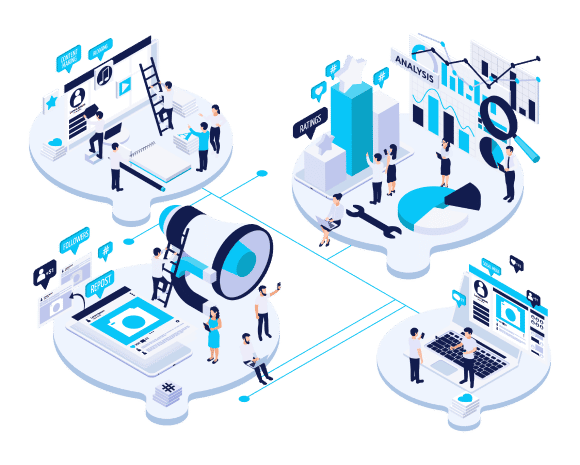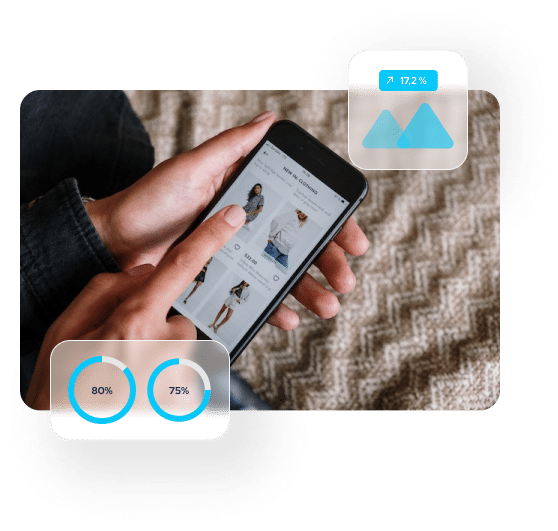Implementing and Integrating eCommerce Platforms
Through the structured approach of design, development, and testing

Why do eCommerce
Brands Need Implementation and Integration?
Brands on a legacy platform and disparate systems might need to implement a new eCommerce platform. And integrate with ancillary systems such as PIM, DAM, and ERP. A new implementation may be required if they may be outgrowing their current platform.
Outgrowing Current System
Startup brands that have grown to a stage where their initial platform can no longer support them require a new platform, triggering the need for replatforming. As well as additional integration. These brands struggle to grow if they don’t update their current systems.
Changes in Business Model
The changes in the business model, such as exploring DTC channels or trying newer markets, might require brands to implement a new platform because the existing platform may be limited in its capabilities.
Starting eCommerce Journey
Some brands may have never considered eCommerce as a viable channel. But the competitive pressures or new opportunities may drive them to explore newer channels, triggering the need for a new eCommerce implementation.
Targeting New Channels
Brands that might target newer channels, such as Amazon or punchout systems, may need to reconsider their master data strategy and integration points. And the limitation of the underlying data model may drive the need for new implementation.
Current Systems Siloed
The brands may struggle to grow if their current systems might not be as integrated. Or maybe using several add-ons because of the limitations of the underlying systems. They will need to consolidate their siloed system footprint to be able to grow.
eCommerce Platform No Longer Supported
Likely to sunset once they reach their end of life, most eCommerce platforms go through their lifecycle. Brands on a legacy platform approaching the end of life may require implementing a new platform.
Want to learn more about why independent consultants have a higher success rate with eCommerce Implementation and Integration?
Our Case Studies for
eCommerce Implementation and Integration

ECommerce Supply Chain Transformation With ERP Selection
Download the eCommerce Supply Chain transformation case study and learn how LockNLube transformed its inventory and supply chain challenges by consolidating over 20 systems. As well as by creating business, process, information, and system architecture as they prepare for the next phase of their growth.

Omnichannel eCommerce Customer Experience Transformation
Download the omnichannel eCommerce customer experience case study and learn how fashion retailer AKIRA built a digital roadmap and managed stakeholder expectations to transform its processes and systems to explore newer business models such as buy-online-pickup-in-store and curbside pickup.

ERP Optimization and Integration Architecture Development
Download the ERP optimization and integration architecture development case study and learn how Work Sharp fixed their broken ERP implementation that caused customer service issues and improved Supply Chain planning.
Our Methodology
for eCommerce Implementation and Integration
This phase starts with an assessment to analyze if implementing a platform is absolutely necessary and will have the highest ROI than upgrading the existing platform. This phase goes through a series of discoveries and workshops to develop a better understanding of requirements and architecture.

1 Assessment
This phase starts with an assessment to analyze if implementing a platform is absolutely necessary and will have the highest ROI than upgrading the existing platform. This phase goes through a series of discoveries and workshops to develop a better understanding of requirements and architecture.
3Detailed Design and Architecture
Based on the MVP and scope finalized in step 2, this phase goes through a series of designs such as high- and low-level and ensures alignment on the design with each stakeholder. This phase will also focus on mapping the interfaces and data elements among all systems involved as part of the integration efforts.
5Optimization
Post-deployment, the platform is monitored for any defects or improvements. As well as making sure that the platform delivered is consistent with the original vision. In the case of any discrepancies, this phase would deliver any improvements required.
2Requirements Analysis
This phase performs a deeper dive into the option identified in step 1 and captures the requirements, including prioritizing requirements for an MVP, as well as assessing the feasibility of the MVP based on the budget and timeline.
4Implementation
This phase would be a series of development sprints, which would include the development and testing of the user stories identified in step 2. As well as resulting in additional user stories if the business users discover that the functionality may not be consistent with their expectations.
Ready to learn how we can help With eCommerce Implementation and Integration?
Our Other
eCommerce Services
ElevatIQ eCommerce services include digital strategy roadmap, channel analysis, product profitability analysis, customer journey mapping, UX and conversion issues, eCommerce platform optimization, system integration, eCommerce platform selection, re-platforming, and contract negotiations.
Digital Commerce Business Model Transformation
This service helps eCommerce brands enable business models such as D2C, buy-online-pickup in-store, buy-online-return-in-store, or subscription-based business models.
Headless Commerce Strategy and Architecture
This service helps eCommerce brands with headless architecture enablement, whether you need a custom headless solution or integration with monolithic platforms such as SAP Hybris and Salesforce Commerce Cloud. Or utilizing a newer breed of headless platforms such as commercetools, Spryker, or VTEX.
E-commerce Solution Architecture
This service helps in setting the right foundation for your architecture, whether your architecture might contain just one platform or several, including PIM, DAM, DXP, and CMS. ElevatIQ can help define the architecture you need to enable customer experience.


